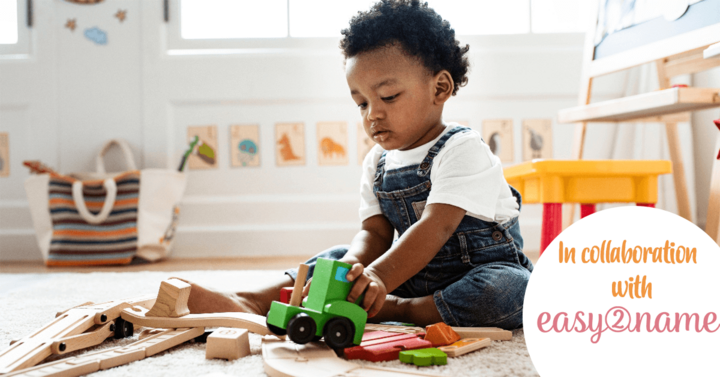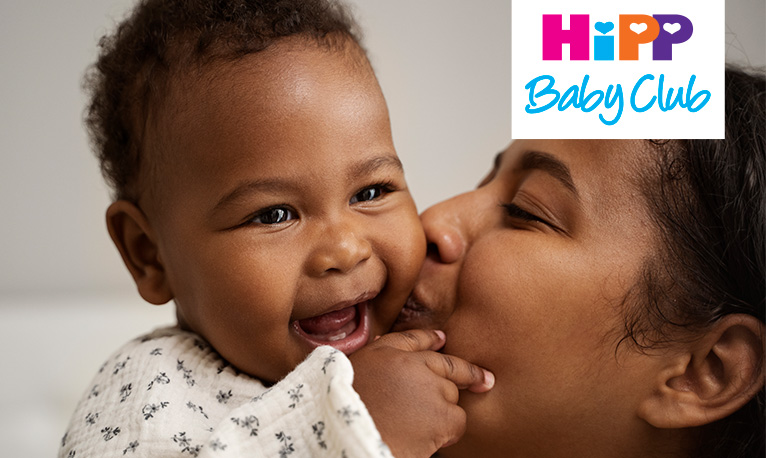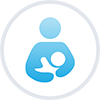The importance of labelling belongings for childcare settings
Toddler | | HiPP Organic
Starting nursery or a childcare setting is a big deal. There’s no two ways about it; waving your little one off on their first day is bound to be emotional. Even though you know they’re going to have a great time, learn lots and make lots of friends, giving your child this first step into independence is a big moment. So, what can you do to ease the transition for you both?
One thing that helps is to be prepared. Putting together your child’s nursery bag well before their first day ensures you have everything you need, or you have time to get the things you’ve missed. As you’re planning your nursery essentials, there’s one thing not to miss – labels.
Gone are the days of sewing endless embroidered labels into school uniform. These days, there are lots of easy ways to label clothes with minimal effort and maximum fun. Our BabyClub partner, Easy2name, has a range of different types and styles of label for you to choose from, according to what you’re labelling. You can find their website here (Psst! If you sign up to our free BabyClub, you can get 15% off of all Easy2Name products).
What to pack and label in your little one’s nursery bag?
- Nappies, Wipes and Creams: Label each pack of nappies, wipes and creams with your child's name to prevent mix-ups and help nursery staff identify your child's supplies.
- Spare Clothes: Engaging activities at the nursery frequently leads to a ‘mess/disaster’, so please make sure to pack a few sets of clothes for them to change into. If your nursery has the space, you may even be able to leave some there for emergencies. Don’t forget to label each item of clothing, including tops, trousers, socks, jackets, gloves, hats, shoes, and underwear with your little one’s name. Stick-on labels are super quick and easy, but consider using iron-on or sew-on labels to ensure durability and help keep track of these personal items.
- Comfort Items: Bringing a little something from home can give your little one the comfort and reassurance they need on their nursery journey. If your child has a favourite comfort item, such as a soft toy or blanket, make sure it’s identifiably theirs by labelling it. This will ensure it doesn't get misplaced or confused with similar items.
- Nutritious Snacks: Label snack containers or bags with your child's name using waterproof and microwave safe labels, to avoid mix-ups and help nursery staff find what your little one needs without any bother.
- Water Bottle: It’s so important to keep your little one hydrated! Water bottles are often kept in a place all together in the classroom, so make sure yours is labelled with a label that can withstand frequent handling and washing, you could even treat them to a Personalised Drinking Bottle.
- Lunchbox: Very important! Make sure the healthy and well-balanced lunch you made gets to your little one by clearly labelling it with your child’s first and surname. Again, you want to choose a label that can withstand being run through the dishwasher, steriliser or microwave. We would recommend Easy2Name’s Personalised Lunch Box.
- Naptime Essentials: Do you need to send your child to nursery with anything for naptime? If your child’s nursery requires you to send them in with a blanket, pillow, sleeping mat or cot cover, make sure you label these items to ensure they stay away from the lost-property box.
- Sun Protection: Always apply sunscreen before the nursery day begins, but for long, hot days you will also need to send your little one in with their own sunscreen. Label your child's sunscreen lotion, hat, and sunglasses with their name to avoid losing them, and to make sure the nursery has your preferred sunscreen to hand.
- Medications and Health Supplies: Last but not least, if your child needs any medication – for example, an inhaler, EpiPen, or eczema cream, make sure they are all labelled. For little ones with allergies, you might want to stick allergy labels on their lunchboxes to remind staff.
Why label?
There are three main reasons to label your child’s things when they head off to nursery:
- To avoid losing items
- For medical/health/hygiene reasons
- To make life easier for nursery staff
Don’t lose things!
Even the smallest setting will have multiple children, which means multiple sets of clothes, lunchboxes, water bottles, nappies, etc. Labelling every item means that each time your little one has an outfit change, you’ll get the right clothes back at the end of the day. The same applies for bottles and lunchboxes, which can easily be mixed up in the lunchtime rush.
Labelling items is the best way to make sure they come back to you. Whatever you spend on the labels will be far less than repurchasing lost items, so it’s well worth the effort – especially if all that’s required is a quick sticker. Your little one will probably love to help you with it!
Safe and secure
Perhaps your little one has sensitive skin and requires special baby wipes, or maybe you’re sending them in with bottles of expressed milk. Either way, labelling items that are personal to your child for health or hygiene reasons will ensure that the nursery practitioners know exactly which items belong to which child. Similarly, any medications going into nursery must be clearly labelled – so if you have removed, for example, a tube of cream from the pharmacy-labelled box, stick a name label on it for clarity. Inhalers and EpiPens should also be clearly labelled.
You can also get special allergy stickers, should your child have a food allergy, which you can put on their lunchbox to alert staff to be extra vigilant.
Easy and practical
We all know nursery practitioners are kept busy through the day. They don’t have time to sift through the lost property box holding up jumpers and asking, ‘who does this belong to?’ And they certainly don’t want to spend the lunchtime period trying to ascertain whose lunchbox belongs to whom. Clearly labelling your child’s items ensures the nursery staff have more time for the fun stuff – like playing with your children, listening to their stories, teaching them songs, and giving them great experiences.


